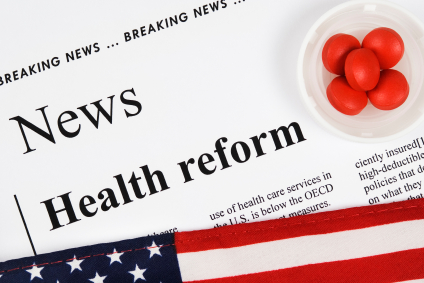
President Trump has released his long-awaited plan to address prescription drug prices, the mysterious contents of which have been causing heartburn for manufacturers, pharmacy benefit managers (PBMs), health plans, and other stakeholders for several weeks. The consensus seemed to be that manufacturers and PBMs were likely to have large targets on their backs. On the campaign trail, President Trump frequently called out manufacturers and “middlemen” for high prices, and there is no love lost between Republicans in Congress and manufacturers over the companies’ support of (or non-opposition to) the Affordable Care Act. PBMs, who have been cast as shady “middlemen,” have also been the focus of recent Capitol Hill hearings and advocacy campaigns.
The theme of self-regulation seems to be the major takeaway. Prescription drug prices have grown too high, and Americans aren’t buying the “research and development” line anymore. The prescription drug supply chain is highly complex, which only adds to the confusion and sows suspicion that there are nefarious dealings behind the scenes.
Anger over drug prices has increased as more and more Americans have become exposed to higher out-of-pocket costs, either because they are taking newer, more expensive therapies, or they are faced with higher deductibles and co-insurance instead of a flat co-payment. The report is correct many elements of the current system encourage higher list prices, with aggressive rebating on the back end. While patients can benefit from those rebates through lower premiums (or even coverage of a drug at all), those benefits aren’t as clear as the price they pay each month when they visit the pharmacy.
President Trump, and his Secretary of Health and Human Services Alex Azar (back in the government after a stint as CEO of Eli Lily), have built a plan that relies heavily on market competition and informed consumers to reduce drug prices. The administration plans to loosen Medicare Part D coverage rules to allow plan sponsors to negotiate more aggressively with manufacturers; implement additional penalties on manufacturers that increase prices above a threshold; speed generic entry; and provide additional tools to patients regarding lower-cost alternatives. Manufacturers, payers, prescribers, and patients will be expected to use these tools to lower prices, the way the laws of economics intend.
What remains an open question is whether the plan is enough. Given public sentiment, manufacturers and payers better hope it is, because it seems like the next step would be something more drastic, such as government price-setting. Also, Americans are angry about drug prices today; many elements of the plan will require Congressional action to implement and won’t impact programs like Medicare Part D until 2020 at the earliest.
It is likely that a Trump/Azar proposal will be more palatable than anything a Democratic president or Congress would consider. There is a huge incentive, at least on the side of manufacturers and PBMs, to get this one right, before harsher regulation comes along.


